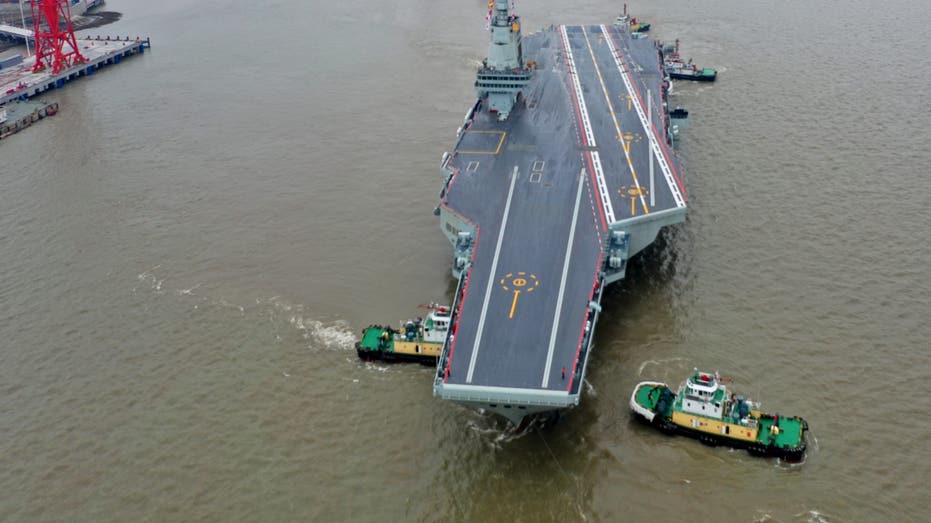
FDR’s Lend-Lease program during World War II threw our allies a lifeline. It signaled U.S. resolve before hostile powers choked off our access to Europe and endangered us.
In September, Chinese forces secured another victory in their relentless quest to control the strategically vital South China Sea. After months of blocking resupply efforts and ramming Philippine vessels on peaceful patrols, Beijing forced a Philippine Coast Guard vessel to retreat from Sabina Shoal – a maritime feature well within the Philippine Exclusive Economic Zone (EEZ).
Fortunately, the U.S. and its allies can peacefully contest China’s at-sea insurgency through a modern Lend-Lease arrangement. The Philippines could exercise its internationally recognized claims by granting the U.S. a 10-year lease on certain maritime features within its EEZ, in exchange for increased access to U.S. military equipment and support.
The stakes are high. For decades, the People’s Republic of China (PRC) has spuriously claimed sovereignty over 90% of the South China Sea, harassing, blocking, ramming and boarding Philippine ships – sometimes wielding axes – from Scarborough Shoal to Second Thomas Shoal, from Whitsun Reef to Thitu Island. Beijing has persisted even eight years after an international tribunal at the Hague rejected Beijing’s sweeping claims.
If the PRC’s manufactured claims became reality, it would threaten the strategic interests of the U.S. and its allies, giving Beijing unprecedented leverage over one of the world’s busiest trade routes and allowing it to erect new military bases and exploit the region’s untold resources. Success here will further embolden Beijing to undermine the sovereignty of others.
THINK THE US EXIT FROM AFGHANISTAN WAS BAD? LOOK WHAT’S BREWING IN THE PACIFIC
Accordingly, U.S. officials have vowed to defend the Philippines under the 1951 Mutual Defense Treaty should hostilities break out. Yet doubts persist in Manila and Beijing about the depth of America’s commitment. If a wavering U.S. fails to deter China or defend its treaty ally, U.S. interests and credibility in the Pacific will suffer a catastrophic blow.
A Philippines lease to the U.S. would peacefully improve both nations’ hands, granting the U.S. a seat at the diplomatic table to safeguard U.S.-Filipino access to islets within the Philippine EEZ, over which the Philippines holds internationally recognized rights.
Unlike President Roosevelt’s 1940 destroyers-for-bases deal and 1941 Lend-Lease program, the leased areas could be designated for joint civilian projects, such as maritime research, or commercial ventures, such as joint exploration of Reed Bank, a likely hydrocarbon hotspot – rather than becoming U.S. military installations.
THE ENEMY WITHIN: TIME TO UNMASK THE CHINESE MASQUERADERS PREYING ON AMERICANS
Equally important, the U.S. should bolster Philippines forces on favorable terms in exchange for the lease. Since 2021, the Philippines has mounted a valiant resistance against Beijing’s vast fleet of naval warships, coast guard patrollers, and paramilitary fishing militias, particularly at Second Thomas Shoal. Manila initiated an ambitious military modernization plan, acquiring foreign anti-ship cruise missiles, frigates and patrol boats. But it needs far more to repel China’s worst provocations.
The U.S. should lend, lease or sell amphibious craft, repurposed civilian patrol aircraft and more helicopters. Additionally, the U.S. should consider leasing decommissioned littoral combat ships and transferring soon-to-be-phased-out landing craft air cushions and retired landing craft utilities.
Preserving the Philippine EEZ will also demand a suite of not-so-sexy military support, including a missile targeting architecture, a secure communications network, ammunition, and joint maintenance and training facilities.
Improving civilian defenses on Philippine island-garrisons is another opportunity. Thitu Island already houses a port, harbor, runway, beaching ramp and 200 civilians. U.S. assistance could extend to airstrip maintenance, search-and-rescue operations, and resupply missions for neighboring outposts and fishing vessels.
CLICK HERE FOR MORE FOX NEWS OPINION
This program also could spur a broader multilateral effort. Japan, Australia and others committed to thwarting China’s maritime aggression could endorse or join the program, further isolating Beijing diplomatically.
While a modern Lend-Lease would reduce long-term risks and costs, it could produce near-term challenges. China will undoubtedly retaliate with economic, military and diplomatic pressure against Manila to fracture the U.S.-Philippine alliance. Some Americans may fear deepening entanglement in another overseas conflict; Filipinos may bristle at any perceived compromise of their sovereignty.
To address these concerns, both governments must clearly articulate the initiative’s long-term strategic value in securing peace and shared interests. They must stress the wise adage: an ounce of prevention is worth a pound of cure. Better to counter Chinese aggression today than to deal with Beijing’s increased demands after it consolidates its hold.
Roosevelt’s Lend-Lease program during World War II threw our peace-loving allies a lifeline. It signaled U.S. resolve before hostile powers choked off our access to Europe and endangered us.
We are luckier than Roosevelt. The South China Sea is tense, but war is not inevitable. A modern Lend-Lease would peacefully help preserve our interests. Without it, China is likely, piece by piece, to turn the South China Sea into a “Chinese lake.”
CLICK HERE TO READ MORE FROM LEWIS LIBBY
Lewis Libby is a distinguished fellow at the Foundation for Defense of Democracies. He previously served as an assistant to the president, national security adviser to the vice president, and principal under secretary of defense for policy.